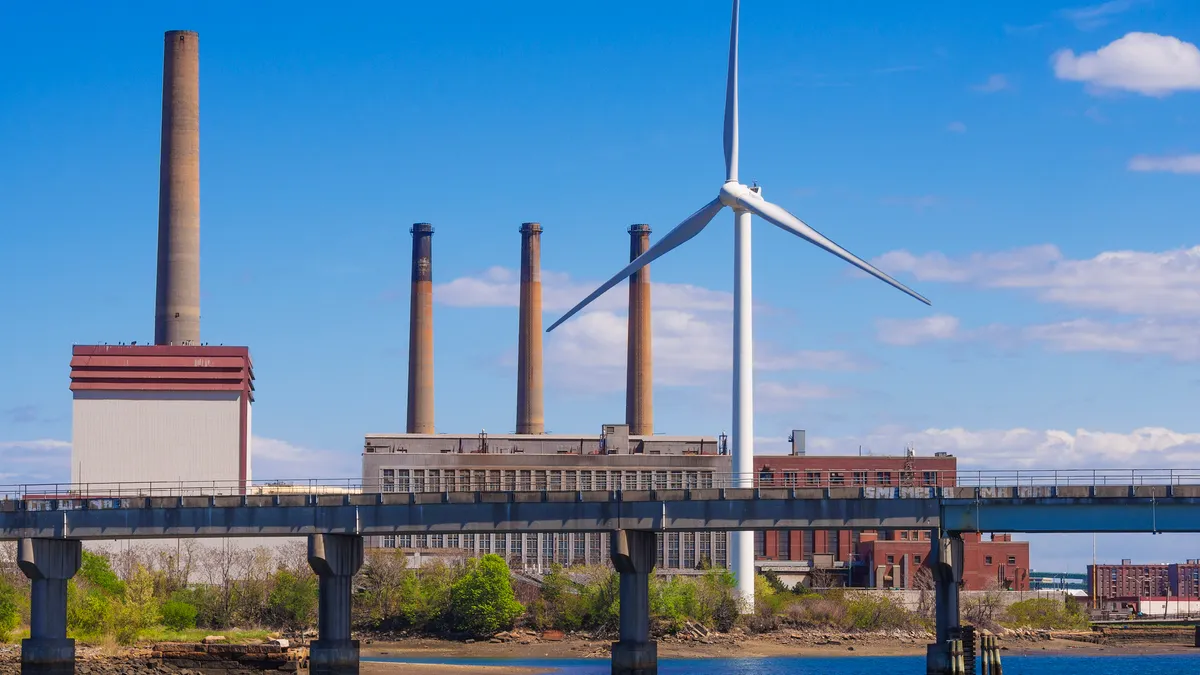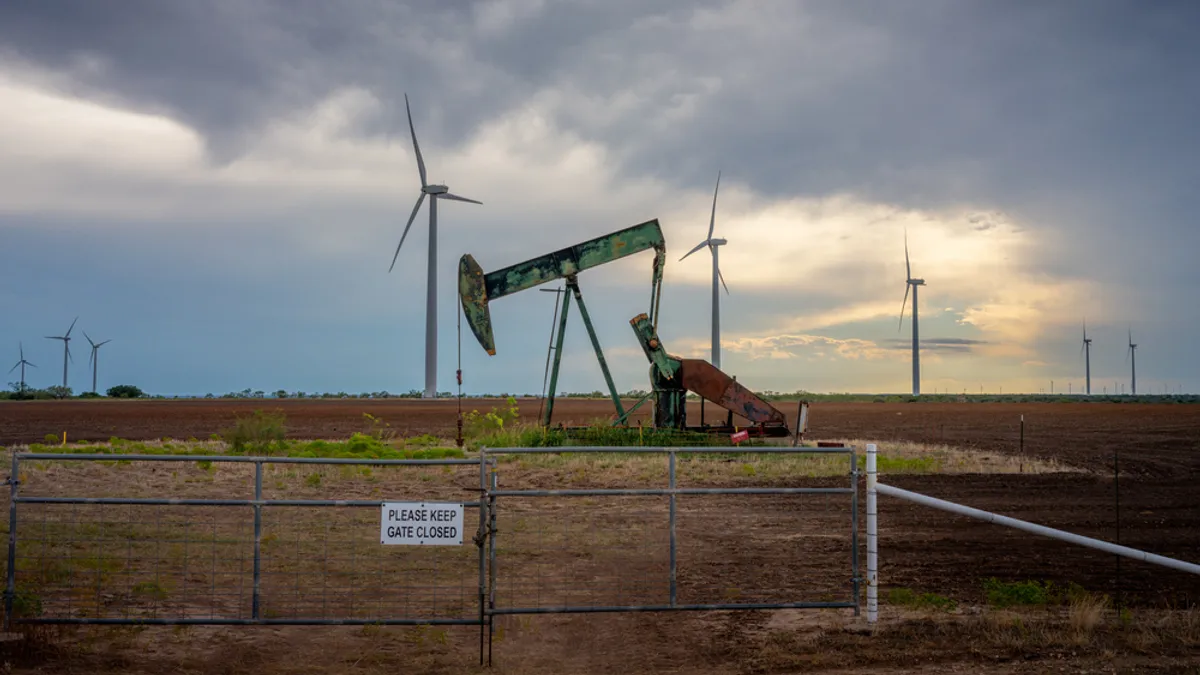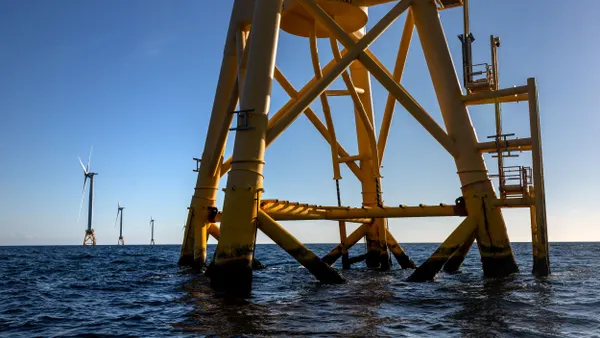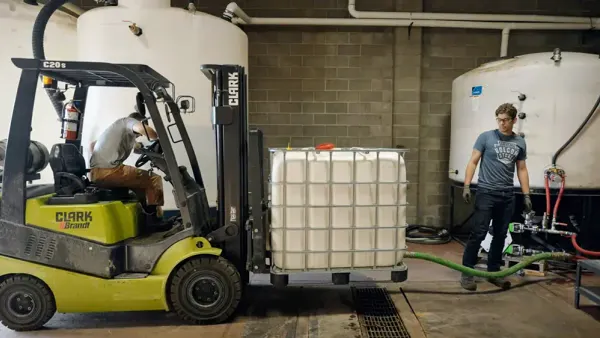Dive Brief:
- Global banks spent 89 cents financing low-carbon energy supply technologies to every dollar spent on fossil fuels in 2023, according to a new report by BloombergNEF. That is an improvement from the 0.74-to-1 financing ratio from the prior year, but still far from the pace needed to reach net-zero.
- In terms of capital investments, low-carbon energy investments surpassed fossil fuels for the first time in 2023, with $1.2 trillion invested in low-carbon projects, compared to $1.1 trillion invested in fossil fuels, a 1.11-to-1 investment ratio, according to the report released Wednesday.
- While the rate of fossil fuel investment and bank-facilitated fossil fuel financing declined in 2023, the financing ratios fall well below what is needed to meet global net-zero emissions targets. “The ratio isn’t evolving at the pace needed to hit the 4:1 level required this decade under commonly referenced scenarios to limit climate change to 1.5 [degrees Celsius],” the report said.
Dive Insight:
The third annual report on energy supply investment and banking ratios from BloombergNEF — a Bloomberg subsidiary which provides research on the low-carbon transition — found that overall, bank-facilitated financing for global energy supply fell for the second year in a row to $1.6 trillion in 2023 from $1.8 trillion in 2022. Capital investments in energy supply increased, reaching $2.3 trillion, up from $2.1 trillion the year prior and $1.8 trillion in 2021.
The decline in energy supply financing was more dramatic for fossil fuels, however, than for low-carbon energy sources. Bank-facilitated financing for fossil fuels fell 18% to $870 billion in 2023, while low-carbon energy sources saw just a 1.4% decrease in financing to $776 billion globally.
BloombergNEF said part of the increase in the energy supply banking ratio is due to how it measures finance, as well as data gaps in China, where Chinese firms shifted to utilizing bonds to less-well reported loans in 2023, the report said. However, the researchers said the ratio also “reflects an active transition in the energy system.”
The research spanned recourse debt issuances, equity issuances, non-recourse project financing and tax equity and tax transfers of 1,720 global banks, according to the methodology. Low-carbon energy sources measured include renewables, storage, biofuels and nuclear energy, as well as the requisite manufacturing equipment and grid-enhancing technologies. The researchers note, though, that small-scale solar is increasing faster than bank financing for low-carbon energy, but is not captured by the report.
“Small scale solar projects create an anomaly in our data,” the report said. “They drew in more capital investment in the past few years … but households and the retail arms of banks are providing much of the finance for this sector. That data is difficult to gather and not included in our estimates for bank facilitated finance. As a result, we may be understating our [ratio],” the report authors said.
Overall, low-carbon capital investment grew 18% from the prior year, but that rate would be 11% if excluding small-scale solar, as the $776 billion in measured low-carbon financing does. Regardless, the growth of the small-scale solar sector vastly outpaced overall low-carbon investment growth, expanding 66% from in 2022, the report said.
North American firms made up the most volume of energy supply facilitated financing, $546 billion, with $216 billion in low-carbon financing and $330 billion in fossil fuel financing: a 0.7:1 ratio, according to the report. By comparison, European-headquartered firms had a 1.5-to-1 ratio of low-carbon to fossil fuel financing in 2023, with $275 billion invested in low-carbon sources and $178 billion in fossil fuels.
Investments and financing for wind, solar and grid enhancement technologies constituted more than half of global banks’ low-carbon financing in 2023. Small-scale ($190 billion) and large-scale solar ($236 billion) accounted for over 38% of all low-carbon investments, with $426 billion of the $1.1 trillion invested in 2023 going to solar. $225 billion was invested in wind energy in 2023, and global banks invested $311 billion in the grids, BloombergNEF said.
Global banks facilitated a collective $445 billion in financing for wind ($171 billion), large-scale solar ($145 billion) and grid technologies ($129 billion). That accounted for 57% of the $776 billion in low-carbon financing.
Last year, New York City Comptroller Brad Lander pushed for major banks to publicly disclose their clean energy financing ratios through shareholder proposals. The proposals were dropped at the Royal Bank of Canada, Citibank and JPMorgan Chase, after the banks reached agreements to disclose their energy supply financing ratios. The proposals received just modest support from shareholders at Bank of America, Goldman Sachs and Morgan Stanley.
JPMorgan released its energy supply financing ratio in November, along with its own methodology, which found it spent $1.29 on low-carbon energy sources for every dollar spent financing carbon-intensive or unabated fossil fuel supply in 2023. Goldman Sachs told its shareholders it planned to release its own green asset ratio to comply with European Banking Authority requirements, but has not yet released that information.










